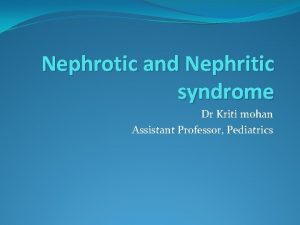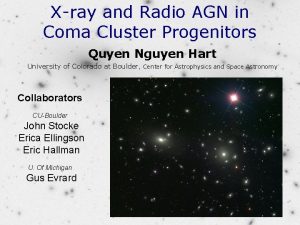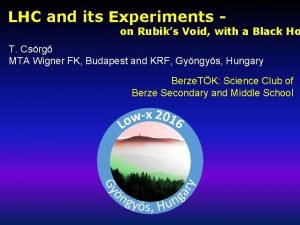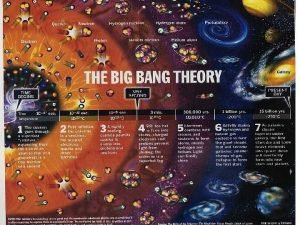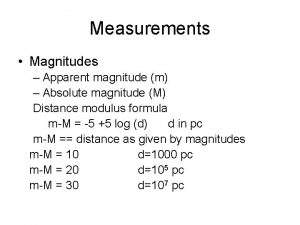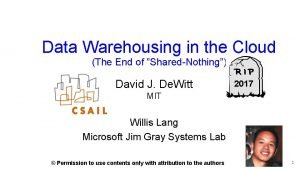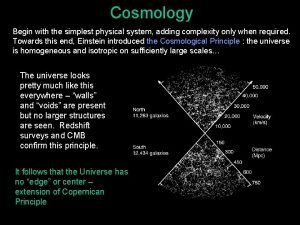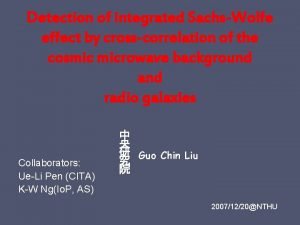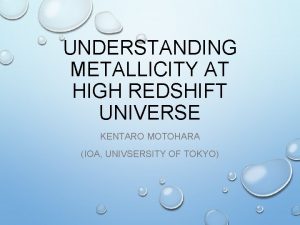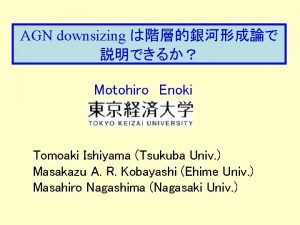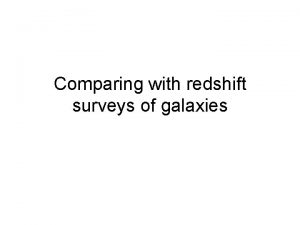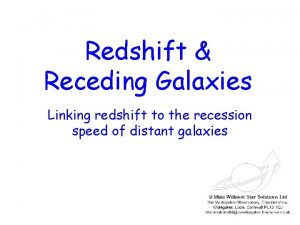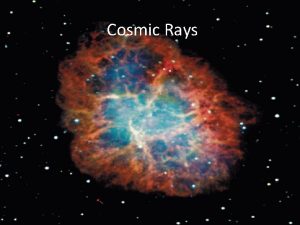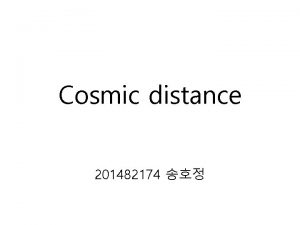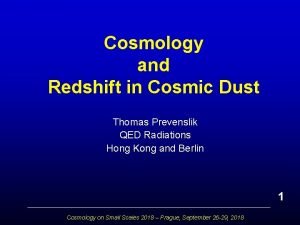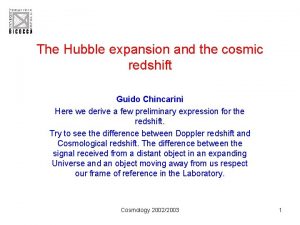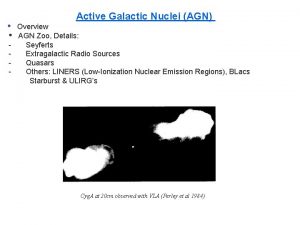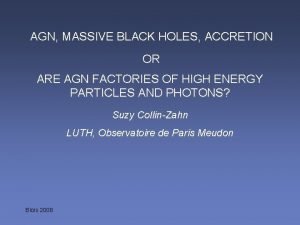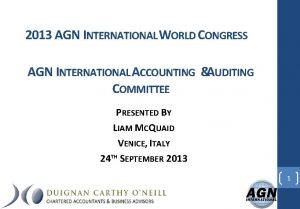COSMIC DOWNSIZING and AGN METALLICITY at HIGH REDSHIFT














- Slides: 14

COSMIC DOWNSIZING and AGN METALLICITY at HIGH REDSHIFT Roberto Maiolino INAF - Oss. Arcetri & Oss. Roma Tohru Nagao INAF - Oss. Arcetri & NAOJ Alessandro Marconi INAF - Oss. Arcetri

Mass-Metallicity relation in galaxies at z=0 Tremonti et al. 2004

Chemical version of the cosmic downsizing (anti-hierarchical growth) Evolution of the Mass-Metallicity relation: massive galaxies chemically evolve rapidly at high-z QSOs z=0 QSOs 12 11 1 3 10 5 9 lg M* = 8 (Kobulnicky et al. 2003, Shapley et al. 2005, Savaglio et al. 2005, Maiolino et al. 2006)

The metallicity of the Broad Line Region at 2<z<4. 5 ~ 5000 QSO optical spectra (UV-rest) from SDSS DR 2 Sample large enough to disentagle the dependence on redshift and on luminosity 22 high quality composite spectra in bins of redshift and luminosity Lya NV Si. II OI+Si. II CIV Si. IV OIV] NIV] CII He. II “ 1600 A bump” OIII] Al. II Si. III] Al. III CIII] NIV+Al. II+NIII+Fe fit residuals Nagao, Marconi & Maiolino 2006

Photoionization models: Accurate fluxes for 15 emission lines - Cloudy - Integration over different distributions (in r and n) of gas clouds - Spanning various gas metallicities (abundances prop. to solar, except for N) matching flux ratios (+ constraints from EW) “best” metallicity for each [z, L] bin Hagai (!) Nagao et al. 2006

Metallicity of the BLR at 2<z<4. 5 Average trends - Significant dependence on Luminosity Consequence of the mass-metallicity relation Z M* MBH LQSO. . . but also dependence on accretion rate (Shemmer et al. 2004) - No evolution with redshift

No metallicity evolution even in the most distant QSOs at 4. 5<z<6. 4 (close to re-ionization) From near-IR spectra (=UV rest-frame) of 20 QSO J 1148+52 z=6. 4

QSOs probe the most extreme cases of anti-hierarchical growth: their host galaxies are fully evolved, from the chemicalpoint of view, already at very high redshift QSOs z=0 QSOs 12 11 1 3 10 5 9 lg M* = 8

Selection effects associated with QSO-galaxy coevolution Passive evolution + Unobscured QSO Star formation + Obscured AGN wind Large number of emission lines: possible to contrain abundances patterns Best matches with abundances at/after the wind Pipino & Matteucci 2004 Granato et al. 2004 QSOs best fit

The Broad Lines sample only a tiny, nuclear region. . . not representative of the host galaxy? Use Narrow Lines in obscured AGNs

NLR evolution at 1. 2<z<3. 8 - 51 optical spectra (UV-rest) of high redshift narrow line radio galaxies (Hz. RG) - 10 optical spectra (UV-rest) of high redshfit X-ray selected QSO 2 in the Chandra Deep Field South CIV/He. II vs. CIII]/CIV diagram: - sensitive to metallicity - removes degeneracy from U - possible to control effects of shocks and dust Nagao, Maiolino & Marconi 2006

NLR evolution at 1. 2<z<3. 8 CIV / He. II No evolution with redshift among Hz. RG at 1. 2<z<3. 8 3 (local) 1 0. 5 Dependence on Luminosity CIV / He. II 3 (local) 1 0. 5 0. 3 CIII] / CIV 1

At z>4 little information on NLR metallicity. . . but information on gas in host galaxy for some QSOs J 1148+52 z=6. 4 same [CII]/CO as loc. ULIRGs same [CII]/FIR as loc. ULIRGs Þ strong enrichment of carbon in the host already at z=6. 4

CONCLUSIONS Luminosity-Metallicity relation: consequence of Mass-Metallicity relation BLR in galaxies & NLR No metallicity evolution with redshift: QSO are extreme cases of the cosmic downsizing (in its chemical version) Abundance patterns matching expectations of AGN-galaxy joint evolutionary models
